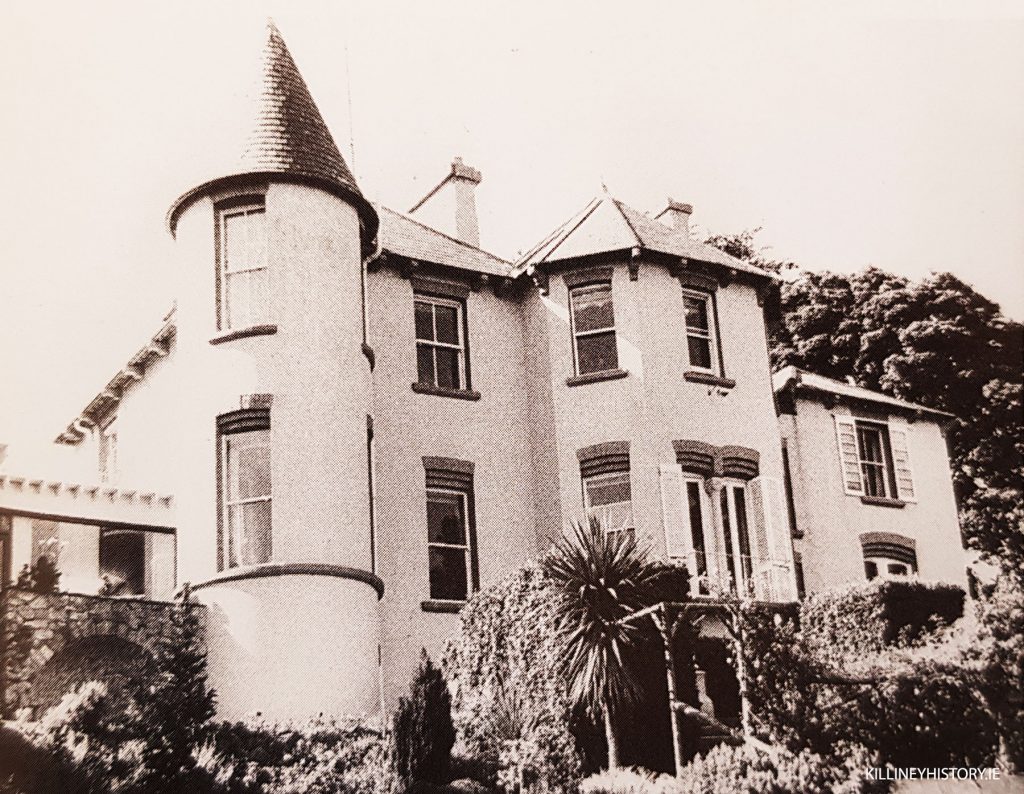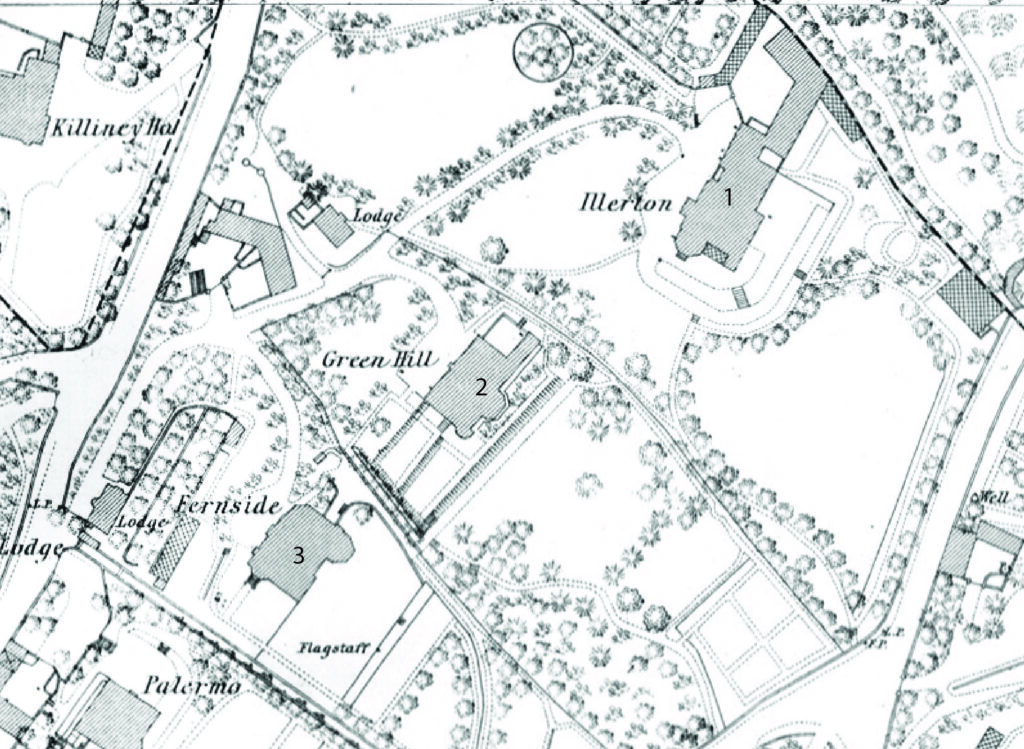The description and photograph below are from ‘The Architecture of Deane and Woodward’ by Frederick O’Dwyer, 1997.
Joseph Robinson’s Green Hill (now called Cliff House) and Robert Exham’s own Fernside were not begun until early in 1861. The Dublin Builder article indicated that the foundations had been laid out by 15 February. However, arrangements were clearly being made before Woodward’s final departure for the continent in mid-December 1860. Benjamin Patterson, Deane and Woodward’s quantity surveyor, records that he visited the site with Exham on 18 November 1860. Patterson marked out the boundaries of the house sites on 31 December. Tenders were invited for the houses on 8 January from Messrs Douglass, Cockburn, Millard and Beardwood. On the following day Patterson engaged Henry Madden to prepare the site and lay out the avenue, since the ‘houses were to be commenced immediately’. Patterson certified an interim payment to him on 14 February 1861. He had made copies, for tender purposes, of the bill of quantities for Exham’s house on 15 January 1861. The contract for the two houses was awarded to James Douglass, who also built Undercliffe. He was later to build Deane and Woodward’s church at Rathmichael, County Dublin. Fernside and Green Hill had been completed by May 1862 when they are referred to in an agreement made between Exham and John Shaw, a Belfast merchant. Undercliffe makes its first appearance in Thom’s Directory in the same year.

Joseph Robinson’s Green Hill is a cross between Undercliffe and Fernside in that it has a turret and a projecting bow. The turret is placed in the angle of the drawing-room wall. One of the chimneystacks is placed at a 45 degree angle as at St Austin’s Abbey, while the entrance has a Gothic arch, instead of the low door and projecting canopy of the first pair described; the only full-blown Gothic opening in any of these houses, it was executed in Caen stone with a brick archivolt. It is a little disappointing to find no corresponding feature internally, the quatrefoil and circular lights in the tympanum being set into a flush wall just below the ceiling.

The Killiney houses are all finished in stucco or dash, with stepped brick arches, brick dressings and the occasional limestone shaft and carved capital. They are smaller in scale than the granite-faced villas of 1858 and lack the elaborate door frames and fretted balusters of the grand designs. Like the wood-work, the chimney-pieces were probably provided by the builder, rather than designed by the architects. Nevertheless, the geometrical planning and arrangement of the facades more than compensate for the loss of such trimmings. Woodward shows that he could create a successful design to suit a relatively tight budget. One recalls Rossetti’s comment that the ‘chief characteristics of Woodward’s genius as an architect were elevation and harmony in the whole’.